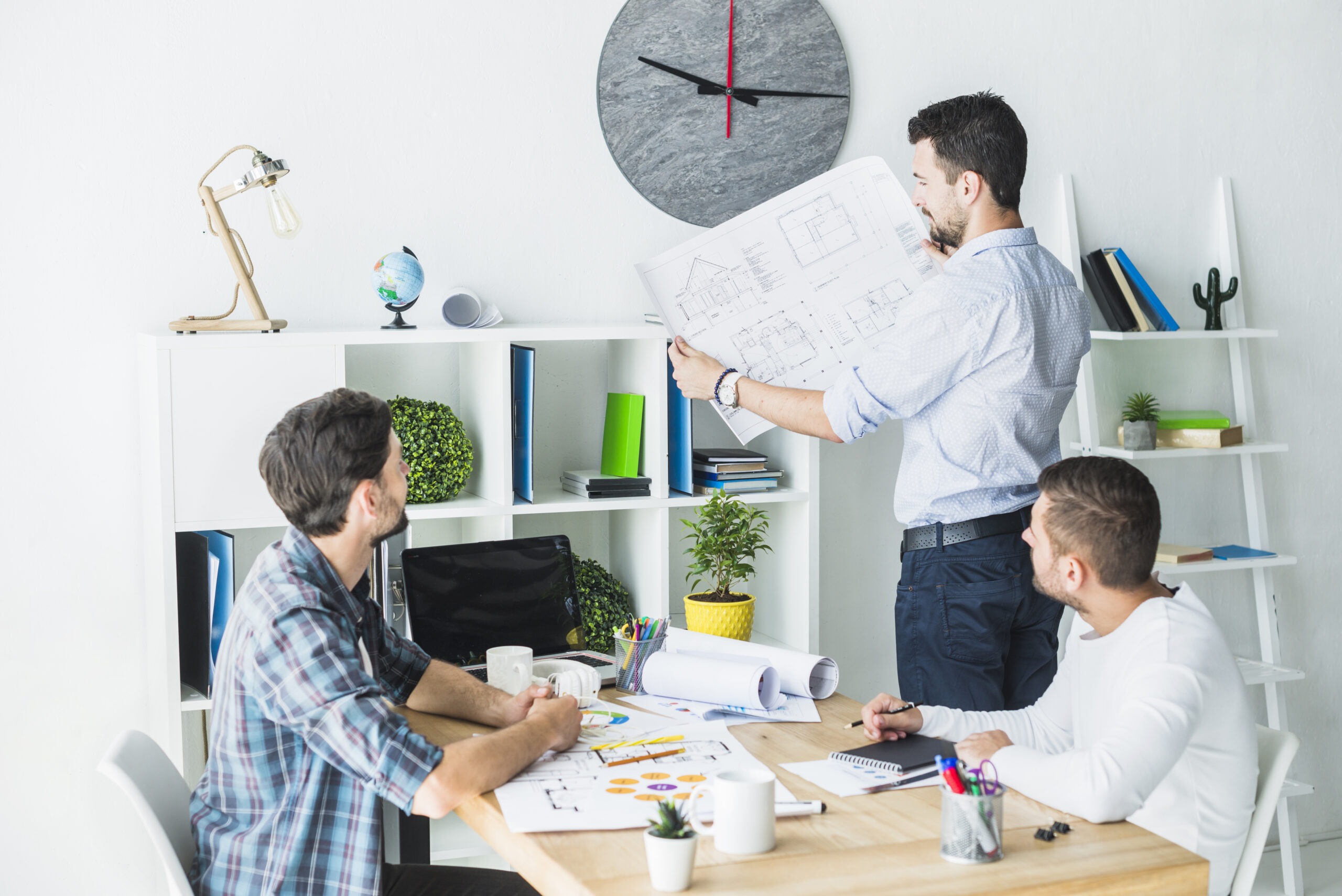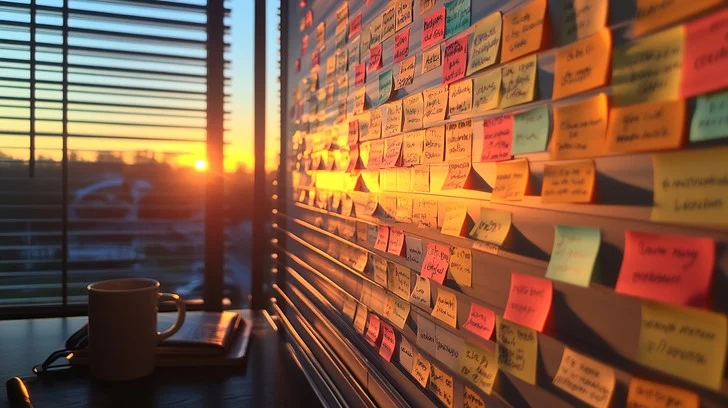Essential Office Design Tips for a Modern Workplace

In today’s fast-paced work environment, the design of your office space plays a crucial role in employee productivity, creativity, and overall well-being. A modern workplace should not only look aesthetically pleasing but also function efficiently to meet the needs of the team. Whether you’re setting up a new office or revamping an existing one, here are some essential tips to help you create a workspace that’s both stylish and practical.
1. Prioritize Comfort and Ergonomics
Comfort is key to maintaining productivity throughout the workday. Invest in ergonomic furniture, such as adjustable chairs and desks, that can be customized to fit the individual needs of your employees. Ergonomic setups help prevent common workplace injuries like back pain and carpal tunnel syndrome, allowing your team to focus on their tasks without physical discomfort.
Quick Tips:
- Use sit-stand desks to promote movement.
- Ensure monitors are at eye level to reduce strain.
- Opt for chairs with lumbar support.
2. Embrace Open Spaces with Quiet Zones
Open office layouts are popular in modern workplaces because they encourage collaboration and communication. However, it’s important to balance open spaces with quiet zones where employees can focus on tasks that require concentration. Creating a variety of workspaces allows employees to choose the environment that best suits their needs at any given moment.
Quick Tips:
- Use glass partitions to create quiet zones without sacrificing openness.
- Incorporate comfortable seating areas for informal meetings.
- Provide phone booths or small rooms for private calls.
3. Incorporate Natural Light and Greenery
Natural light is a powerful tool in creating a positive work environment. It not only reduces the need for artificial lighting but also has been shown to improve mood and productivity. Position workstations near windows and use light-colored walls to reflect sunlight throughout the office. Additionally, adding plants and greenery can enhance the aesthetic appeal of the office while improving air quality and reducing stress.
Quick Tips:
- Use large windows or skylights to maximize natural light.
- Choose low-maintenance plants like succulents or snake plants.
- Consider adding a green wall for a dramatic effect.
4. Utilize Flexible Furniture
In a modern workplace, flexibility is crucial. Furniture that can be easily moved or reconfigured allows you to adapt the space to different needs, whether it’s for a large team meeting, a brainstorming session, or a quiet day of individual work. Modular furniture, such as desks that can be grouped together or separated, is an excellent choice for offices that need to accommodate varying team sizes and work styles.
Quick Tips:
- Invest in modular desks and storage units.
- Use lightweight, mobile furniture for easy rearrangement.
- Consider foldable tables and stackable chairs for multipurpose rooms.
5. Integrate Technology Seamlessly
Technology is at the heart of any modern workplace. Ensure that your office design supports the seamless integration of tech tools, from video conferencing systems to wireless charging stations. Consider the placement of power outlets, cable management, and the need for strong Wi-Fi coverage throughout the office.
Quick Tips:
- Include built-in power outlets in desks and communal areas.
- Use cable organizers to keep workstations tidy.
- Install large monitors or screens in meeting rooms for easy collaboration.
6. Reflect Your Brand and Culture
Your office design should reflect your company’s brand and culture. Whether it’s through the choice of colors, materials, or artwork, make sure that the design elements resonate with your brand’s identity. A well-designed office can boost employee morale and make a strong impression on clients and visitors.
Quick Tips:
- Use your brand’s color palette in the décor.
- Display company achievements and values in common areas.
- Incorporate artwork or design elements that align with your company’s mission.
7. Promote Collaboration with Thoughtful Layouts
Collaboration is essential in a modern workplace. Design your office layout to facilitate teamwork by creating spaces where employees can easily gather and share ideas. This could include communal tables, breakout areas, or dedicated brainstorming rooms equipped with whiteboards and other collaborative tools.
Quick Tips:
- Place collaborative spaces near workstations to encourage spontaneous discussions.
- Use round tables for meetings to foster equality and open dialogue.
- Designate areas for different types of collaboration, such as casual lounges or formal meeting rooms.
8. Consider Sustainability
Sustainability is becoming increasingly important in office design. Opt for eco-friendly materials, energy-efficient lighting, and recycling stations to reduce your office’s environmental footprint. Not only does this contribute to a healthier planet, but it also resonates with employees who value corporate responsibility.
Quick Tips:
- Choose furniture made from sustainable or recycled materials.
- Install energy-efficient LED lighting.
- Provide clearly labeled recycling bins throughout the office.
Conclusion
Designing a modern workplace requires a thoughtful balance of aesthetics, functionality, and flexibility. By prioritizing comfort, embracing natural elements, and fostering collaboration, you can create an office environment that not only looks great but also enhances the productivity and well-being of your team. Remember, a well-designed office is an investment in your company’s success, creating a space where employees are inspired to do their best work every day.







Disquieting [url=https://www.nothingbuthemp.net/collections/thc-water-soluble ]water soluble edibles[/url] has been perfectly the journey. As someone pointed on unpretentious remedies, delving into the coterie of hemp has been eye-opening. From THC tinctures to hemp seeds and protein pulverize, I’ve explored a variety of goods. Teeth of the misunderstanding adjoining hemp, researching and consulting experts own helped cross this burgeoning field. Overall, my experience with hemp has been despotic, contribution holistic well-being solutions and sustainable choices.
Trying https://www.nothingbuthemp.net/collections/thc-chocolate has been perfectly the journey. As someone rapier-like on spontaneous remedies, delving into the coterie of hemp has been eye-opening. From THC tinctures to hemp seeds and protein pulverize, I’ve explored a type of goods. Teeth of the disarray adjoining hemp, researching and consulting experts own helped pilot this burgeoning field. Overall, my experience with hemp has been positive, contribution holistic well-being solutions and sustainable choices.
Trying https://www.nothingbuthemp.net/collections/kava-vapes has been perfectly the journey. As someone fervent on natural remedies, delving into the world of hemp has been eye-opening. From THC tinctures to hemp seeds and protein pulverize, I’ve explored a variety of goods. In defiance of the disorder bordering hemp, researching and consulting experts own helped navigate this burgeoning field. Entire, my live with hemp has been optimistic, contribution holistic well-being solutions and sustainable choices.